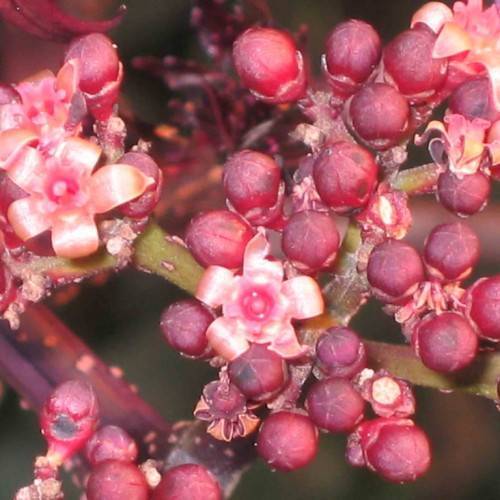
leea
Leea guineensis
Cycle:
Perennial
Watering:
Average
Hardiness Zone:
10 - 11
Flowers:
Flowers
Sun:
Part shade,full shade
Leaf:
Yes
Growth Rate:
Low
Maintenance:
Moderate
Drought Tolerant:
Yes
Salt Tolerant:
Yes
Care Level:
Medium
watering
Leea guineensis (Leea) is a tropical, evergreen shrub that grows in partial shade in tropical climates. It requires moist, well-drained soil to thrive. Leea should be watered frequently during its growing period (spring to fall). Water the soil deeply whenever the top 2-3 inches of soil are dry. Make sure the soil is evenly moist, but not soggy. During the winter, when the plant is dormant, the amount of water should be reduced, only watering when the soil is dry. Leea should receive about 1 inch of water per week during this time. It is important to ensure the soil is not over-watered and the plant’s roots do not suffer from water-logging.
sunlight
Leea guineensis, commonly known as "East Indian ivy," requires at least 6 hours of direct sunlight per day. The species is known to thrive in humid, subtropical climates with temperatures between 16-20°C. Direct sunlight also facilitates the growth of its reddish leaves, which can reach up to 10 cm in length. When the plant is grown indoors, it is important to place it near a bright window to ensure it gets enough natural light. If grown outdoors, it should be placed in a sunny spot with partial shade in the evening. If temperature and humidity levels remain steady, the plant should receive at least 6 hours of sunlight for successful growth.
pruning
Leea guineensis (commonly called Leea) should be pruned twice a year. Pruning should be done in late winter or early spring, just as new growth appears. Start by removing any dead or dying branches or branches that are growing straight up. This will promote large, strong lateral branches. Prune some of the taller branches to maintain a desired shape. If needed, thin out unwanted shoots, which will also help with airflow around the tree. Also, take off any suckers growing from the base of the tree. Finally, prune back long, overhanging branches to prevent them from becoming too heavy. Do not prune more than 1 third of the tree's overall growth at a single time.
